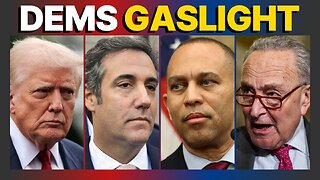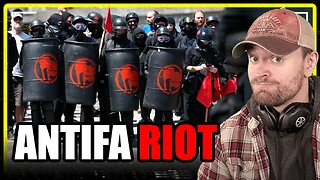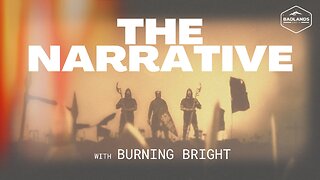Premium Only Content

🌍 The Gas Field That Ties and Divides: Qatar and Iran’s Delicate Dance 🌍
🌍 **The Gas Field that Unites and Divides Qatar and Iran!** 🌍
At the heart of the Persian Gulf lies one of the world's greatest energy treasures: the **South Pars/North Dome** gas field. This subterranean colossus, shared between Qatar and Iran, is both a source of cooperation and tension between the two nations. While the wealth generated by this resource unites them economically, the geopolitical complexities of the region turn this partnership into a delicate tug-of-war, where converging and diverging interests intertwine.
### **The Shared Jewel**
The **South Pars/North Dome** gas field is the largest natural gas reservoir in the world, with its expanse divided between Iranian and Qatari territories. Approximately two-thirds of the field lie in Iranian waters (South Pars), while the remainder belongs to Qatar (North Dome). This geographical division reflects an inevitable interdependence. To extract, process, and export the gas efficiently, both countries must coordinate on environmental, security, and operational issues.
For instance, water contamination or infrastructure problems on one side of the field can directly impact the other. Smuggling and the protection of facilities also require collaboration. This "forced partnership" ensures that Doha and Tehran maintain regular dialogue, even amid broader regional disputes.
### **A Pragmatic Relationship**
Although the gas field is a reason for cooperation, it also exposes the fragility of this relationship. Qatar, despite its geographical proximity to Iran, has deep ties with the West, hosting the largest U.S. military base in the Middle East. This duality creates a tense scenario, especially during escalations between Iran and its adversaries, such as Israel and the U.S.
In recent years, Qatar has sought to balance its relationship with Tehran, avoiding alienating Iran entirely, even when pressured by the West. During the blockade imposed by some Gulf countries in 2017, Iran opened its ports and airspace to assist Qatar, further solidifying this pragmatic alliance. However, this closeness does not mean the two countries agree on all political issues. They have a history of disagreements, particularly over topics like Syria and Lebanon, where they supported opposing sides.
### **A Game of Interests**
The gas field not only unites the two countries economically but also divides them strategically. For Iran, the field represents an opportunity to alleviate economic pressures caused by international sanctions. For Qatar, it is a vital source of revenue that sustains its economy and global influence. Any disruption to this dynamic could have devastating consequences.
Imagine a scenario where tensions between Iran and the West escalate into armed conflict. In such a case, Qatar could find itself in an extremely vulnerable position. If it allows its military base to be used against Iran, it risks direct or indirect retaliation. Ballistic missiles, cyberattacks, or sabotage of its gas installations could severely compromise its economy and stability.
On the other hand, if Qatar decides to block U.S. access to its military base or avoid cooperating with the West, it could face diplomatic and economic repercussions from its traditional allies. It is a true game of chess, where every move must be carefully calculated.
### **Diplomacy Under Pressure**
Qatar has a reputation as a master of regional diplomacy, mediating complex conflicts in Gaza and Afghanistan. This skill could be crucial in navigating the current crisis. By keeping communication channels open with Iran, Qatar may try to promote de-escalation and prevent the gas field from becoming a flashpoint.
However, international pressure is intense. In the U.S., there is criticism of Qatar's "overly friendly" stance toward Iran. For many American analysts, the recent statement by Qatari Prime Minister **Muhammad bin Abdulrahman Al-Thani**—that Qatar would support Iran under certain conditions—was seen as a worrying signal. After all, how can a strategic U.S. ally be willing to support such a fierce adversary?
### **Conclusion: An Uncertain Future**
The **South Pars/North Dome** gas field symbolizes the duality of Qatar-Iran relations: economic unity and political division. While cooperation in the energy sector remains essential for both countries, geopolitical tensions threaten to turn this resource into a point of friction.
For Qatar, the challenge will be balancing its economic interests with its strategic obligations. Will it manage to maintain its neutrality without compromising its security? Or will it be forced to pick a side in a moment of crisis? The answers to these questions will not only shape the future of the small emirate but also determine the role it plays on the global geopolitical chessboard.
What do you think, reader? Can Qatar maintain this balancing act? Share your thoughts in the comments!
-
 18:09
18:09
Forrest Galante
8 hours agoI Survived 24 Hours In The World's Deadliest Jungle
16.6K5 -
 25:31
25:31
MattMorseTV
13 hours ago $20.11 earned🔴We just got THE MOTIVE.🔴
25.1K137 -
 15:49
15:49
Nikko Ortiz
17 hours agoI Have A Gun
14.5K15 -
 15:51
15:51
GritsGG
14 hours agoWinning a Warzone Match From a Tree! #1 Player's POV!
6.26K1 -
 2:31:01
2:31:01
The Connect: With Johnny Mitchell
1 day ago $36.22 earned"It's About To Get Worse"- CIA Agent Andrew Bustamante Explains Why It's Time To Leave America
42.2K72 -
 16:21
16:21
The Pascal Show
1 day ago $1.80 earned'THE FEDS MADE THIS UP!' Candace Owens Drops BOMBSHELL Pushing Back On Details In Charlie Kirk Case
6.44K9 -
 LIVE
LIVE
Lofi Girl
2 years agoSynthwave Radio 🌌 - beats to chill/game to
321 watching -
 25:39
25:39
DeVory Darkins
13 hours ago $20.83 earnedMass shooting erupts in Michigan as bombshell study shows left wing political violence skyrocketed
38.5K111 -
 5:55:33
5:55:33
MattMorseTV
12 hours ago $127.42 earned🔴Portland ANTIFA vs. ICE.🔴
168K326 -
 3:13:00
3:13:00
Badlands Media
1 day agoThe Narrative Ep. 40: Acceleratia.
75.6K30